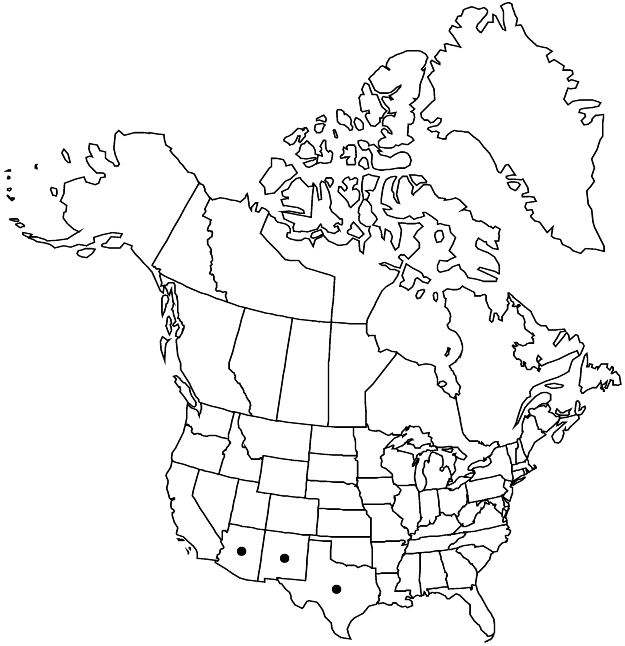Kallstroemia hirsutissima
Fl. S.E. U.S., 670, 1333. 1903.
Herbs, annual. Stems prostrate, to 0.7 m, copiously sericeous and hirsute with white or gray antrorse hairs. Leaves obovate in outline, 1–4 × 2–4 cm, copiously and conspicuously hairy; stipules 3–6 × 1 mm; leaflets 6–8, broadly elliptic to oblong-ovate or broadly ovate, 12–19 × 5–11 mm, terminal pair largest, surfaces densely hirsute, veins and margins sericeous. Pedicels 5–12 mm in flower and fruit, shorter than subtending leaves, thickened distally, curved or straight. Flowers 5–9 mm diam.; sepals persistent, subulate, 2.5–4 × 1 mm, as long as petals, in flower as long as style, in fruit clasping mature fruit body and 1/2 as long, only scarious margins becoming involute, hirsute, sparingly strigose; petals marcescent, 1-colored, yellow, fading white or orange, obovate, 2–4 × 1.5 mm; stamens as long as style; anthers yellow, ovoid, less than 1 mm; ovary globose, 1 mm diam., hairy; style broadly conic, 0.3–0.5 mm, 1/3–1/2 as long as ovary, hairy; stigma terminal, appearing almost sessile on ovary. Schizocarps broadly ovoid, 4–5 × 6–8 mm, strigillose; beak conic, 1–4 mm, shorter than fruit body, base broadly conic, hirsute; mericarps 4 × 1 mm, abaxially tuberculate, all tubercles rounded, less than 1 mm, sides pitted, adaxial edge angled.
Phenology: Flowering Jun–Oct, following summer rains.
Habitat: Desert scrub, semiarid grasslands.
Elevation: 0–1700 m.
Distribution

Ariz., N.Mex., Tex., Mexico (Chihuahua), Mexico (Coahuila), Mexico (Nuevo León), Mexico (San Luis Potosí), Mexico (Tamaulipas)
Discussion
Kallstroemia hirsutissima is restricted to the Chihuahuan Desert and adjacent grasslands, mainly at higher elevations. The spreading, copiously hairy stems form a dense carpetlike mat. The species is reported to poison cattle, goats, and sheep (J. M. Kingsbury 1964).
Selected References
None.